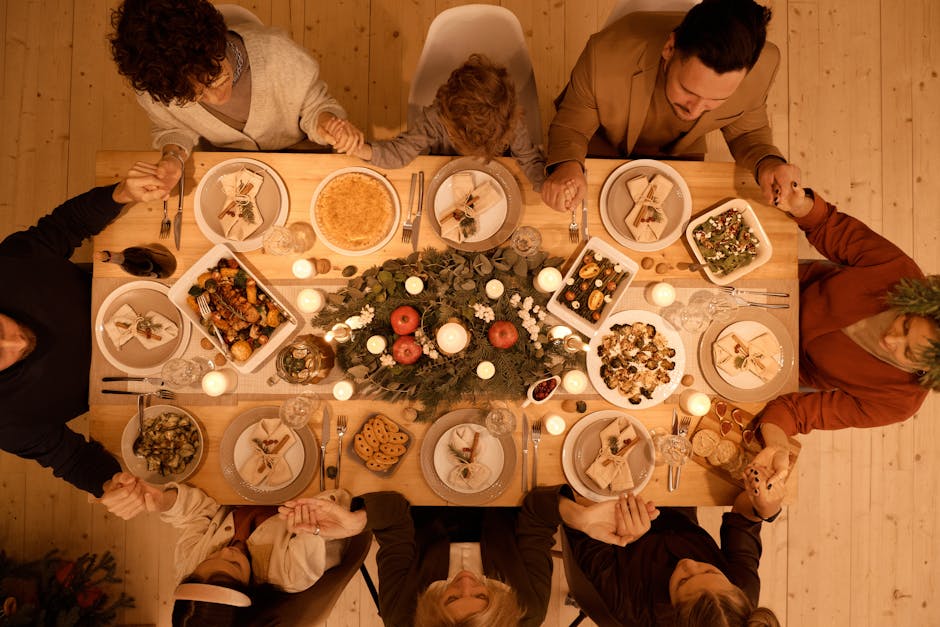The Tactile Kitchen: Enhance Cooking with Sensory Experiences
Imagine stepping into your kitchen and being enveloped by the symphony of scents, sounds, and textures—all working together to create not just a meal, but an experience. In a world where cooking can often feel like a chore, connecting deeply with our food transforms the mundane into the extraordinary. Welcome to the tactile kitchen, where sensory experiences enhance flavor and forge a stronger connection to what we eat. In this article, we’ll explore how touch, sound, sight, and aroma can elevate your culinary creativity and enrich your relationship with food.
Embracing the Senses in Cooking

Cooking is inherently a sensory experience. With each chop of the knife or simmer of the pot, we engage our senses in a profound way. But what happens if we consciously heighten these sensory interactions? The tactile kitchen emphasizes not only the flavors but the feelings associated with food preparation—inviting joy, creativity, and deeper mindfulness into our cooking routines.
Yet, many cooks often bypass these sensory elements, resulting in a more mechanical cooking process. By consciously engaging our senses, we can enhance each culinary adventure. Reflect on the crunch of fresh vegetables being chopped, the vibrant sight of colorful produce, or the soothing aroma wafting from a pot bubbling on the stove. Each aspect plays a crucial role in crafting a meal rich in flavor and personal significance.
The Importance of Texture

One significant sensory element in cooking is texture. Incorporating a variety of textures can drastically influence the perception of flavor. The crunch of roasted nuts sprinkled over a smooth soup, for instance, can elevate an ordinary dish to culinary brilliance. Consider how texture affects your food choices—creaminess often leads us to rich desserts, while crispiness can make salads more enticing.
When cooking, try introducing contrasting textures into your dishes. Think about pairing creamy dips with crunchy dippers or adding marinated vegetables to a grain bowl full of fluffy quinoa. Taking a closer look at texture can lead you to discover new flavor dimensions, ultimately enhancing your meals. Check out Cooking with Colors for insights on how vibrant ingredients can not only boost nutrition but also add appealing textures.
Sounds of Culinary Creation

Have you ever noticed how the sounds in your kitchen influence your cooking experience? The sizzling of garlic in olive oil can ignite your appetite, while the rhythmic chopping of vegetables can create a soothing ambiance. The elements of sound in cooking are often underappreciated, yet they shape our culinary encounters profoundly.
Take a moment to create a playlist that enhances your cooking experience—music that brings joy or energizes your cooking can make the process feel like an engaging performance. You might be surprised by how the flowing melodies influence your mood and creativity. For more on how music impacts our culinary experiences, check out The Sound of Food.
The Aroma That Awakens Memories

Our sense of smell plays a vital role in how we perceive flavor, making aromatic ingredients essential in every kitchen. Aromas can trigger powerful memories and evoke emotions, transforming an everyday meal into a nostalgic journey. Think of baking bread, where the warm, inviting scent brings back images of family gatherings or cozy winters.
Embrace the power of herbs, spices, and aromatics in your cooking. Basil, rosemary, and garlic don’t just uplift a dish's flavor—they engage olfactory memories and emotions, enhancing your connection to food. Explore how nostalgia and aroma intersect with your culinary creations by reading The Aroma of Memory.
The Visual Feast: Cooking with Color

Color isn’t just about aesthetics; it also influences our perception of taste. Bright, vibrant vegetables not only look appealing but evoke feelings of freshness and health. By consciously selecting colorful ingredients, we visually invite flavor and wellness into our meals.
Incorporating a rainbow of colors onto your plate promotes a well-balanced diet, encouraging both nutrition and enjoyment. Additionally, research indicates that the color of our food affects our taste perceptions. So, don’t hesitate to inject color into your dishes! Discover more about enhancing taste through color choices at Cooking with Colors.
Touch and Cooking: The Beauty of the Hands-On Approach

Engaging physically with our food deepens our connection to it. Whether kneading dough or rolling out pasta, the tactile nature of cooking fosters engagement. Nominate your hands as the primary tool in the kitchen; after all, they provide a direct line to the ingredients, allowing you to sense freshness, doneness, and texture in ways no measuring tool can replicate.
Additionally, consider the heartwarming act of gathering around the dining table to enjoy meals prepared by hand. The experience becomes more meaningful when friends and family can actively participate in the preparation process, transforming cooking into a collective practice filled with love and connection.
Flavor Pairing: The Art of Culinary Alchemy

Flavor is where the magic happens in the kitchen. But how do you craft harmonious flavor pairings? It involves understanding flavor profiles and what complements or contrasts well. Unique combinations can not only surprise the palate but also represent the fusion of different cultural influences.
Experiment with unexpected pairings by using local ingredients or whatever you have on hand. For instance, consider how sweet roasted peaches would taste with salty feta—this playful exploration leads to culinary alchemy, where leftovers become gourmet delights. For more on this captivating process, check out Culinary Alchemy.
Cooking Beyond the Kitchen: Engage Your Community

Cooking can become a truly communal experience if you involve others. Whether it’s cooking with family, hosting a themed dinner, or organizing potlucks, sharing cooking experiences builds connections and enriches the overall experience.
Participate in community cooking classes or join local culinary clubs to engage with others who share your passion. Exchanging recipes and cooking styles fosters creativity, deepening your connection to both food and the community around you.
Food as a Canvas: Create Edible Art

Lastly, use your culinary creations as a form of self-expression. Cooking is a visual and artistic endeavor; why not embrace that? Design your plates with care and creativity, play with colors, shapes, and arrangements to create edible art.
Cooking isn’t just about sustenance; it’s also about taking joy in the process, relishing in the beauty of your creations. Your dishes can tell a story—a narrative of your culinary journey. For inspiration on how to engage creatively in the kitchen, explore Cooking as a Canvas.
Final Thoughts: Embrace Your Sensory Culinary Journey

In the tactile kitchen, cooking becomes so much more than a necessary task. It engages our senses, fueling creativity and connection. By embracing the tactile, auditory, aromatic, visual, and emotional layers of cooking, you can transform the ordinary into the extraordinary.
Take the time to explore your senses while cooking. Let them guide you as you create delicious meals that not only satisfy hunger but also nourish the body and soul. The next time you step into your kitchen, remember that every ingredient holds potential beyond flavor; it tells a story. Let your journey inspire your cooking, and soon you’ll find yourself in a realm where food transcends mere sustenance.


